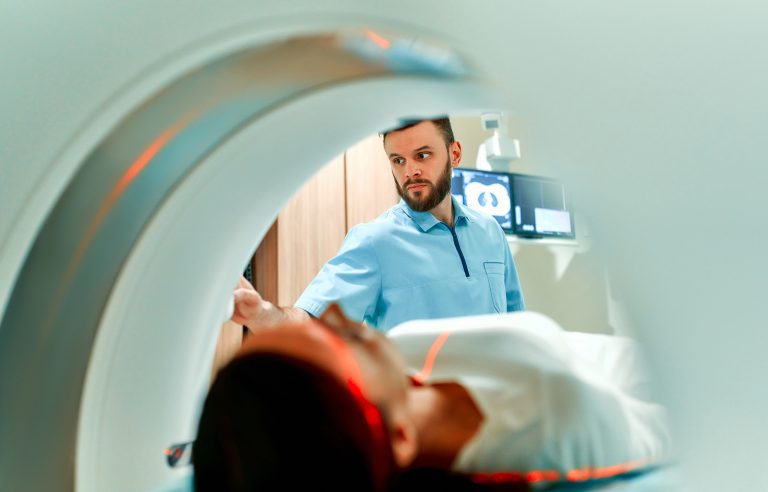
Annual magnetic resonance imaging (MRI) screening from 30 years of age may reduce breast cancer mortality by more than 50% in women with pathogenic mutations in the ATM, CHEK2, and PALB2 genes, suggest data from a modeling study led by University of Washington researchers.
Currently, the National Comprehensive Cancer Network recommends that women with ATM and CHEK2 pathogenic variants (PVs) are considered for annual MRI in addition to mammography from age 40 years, while MRI should be considered from age 30 years in those with PALB2 PVs.
However, Kathryn Lowry, lead author of the study and assistant professor of radiology at the University of Washington School of Medicine, told Inside Precision Medicine that these guidelines “have been based on the known benefits of MRI screening in women with variants in BRCA1 and BRCA2.”
This is partly due to the fact that, although ATM, CHEK2, and PALB2 PVs are quite common in the general population – together they are as common as BRCA1/2 mutations – there are limited clinical data on screening outcomes for these women.
Lowry and team therefore used risk estimate data from the Cancer Risk Estimates Related to Susceptibility (CARRIERS) Consortium, which includes more than 32,000 women with breast cancer and a similar number of matched controls, to adapt two Cancer Intervention and Surveillance Modeling Network (CISNET) models so that they applied to women with ATM, CHEK2, and PALB2 PVs.
The researchers report in JAMA Oncology that, across the models, the mean estimated cumulative lifetime breast cancer risk without screening was 20.9% for women with an ATM PV, 27.6% for those with a CHEK2 PV, and 39.5% for those with a PALB2 PV. The corresponding risks for breast cancer death in the absence of screening were 3.4%, 4.6%, and 7.7%.
Across the three PVs, the models predicted that, per 1000 women screened, annual mammography alone starting at age 40 years could reduce breast cancer mortality by a mean 36.4% to 38.5% compared with no screening, averting between 13 and 30 breast cancer deaths depending on the mutation.
When annual MRI starting at age 40 years was added to annual mammography from the same age, estimated breast cancer mortality was reduced 52.3% to 53.6% and between 18 and 42 deaths were averted compared with no screening.
The most intensive strategy that the researchers modeled involved annual MRI alone from age 25 to 39 years then annual mammography and MRI from age 40 to 74 years. This approach resulted in an estimated 55.7% to 60.2% reduction in breast cancer mortality and between 21 and 45 deaths averted versus no screening.
Adding MRI is not without its problems though. Extra screening results in a higher rate of false-positive results, which can lead to unnecessary stress and additional procedures for patients.
Taking the false positive rates into account, Lowry and colleagues determined that initiating annual MRI screening between 30 and 35 years of age and then adding annual mammograms from 40 years onwards offered the best balance between benefits and harms for these women.
“Based on our results, the balance of procedures performed and life expectancy gains from MRI screening in this setting is similar to model estimates for other cancer screening policies. Therefore, we concluded that starting MRI screening at age 30 to 35 is likely reasonable to offer women with these PVs,” Lowry remarked.
However, she cautioned that while the current analysis estimates the average effects of screening in women with these PVs, “breast cancer risk for an individual woman will depend on other risk factors besides her genetics.”
Lowry said: “More research is needed to better understand how these genetic variants and other breast cancer risk factors interact, which will hopefully lead to more tailored screening recommendations for women based on personal risk.”
“In the meantime, we hope our results can provide some general guidance for women and their physicians about the advantages and disadvantages of MRI to help with their decisions regarding screening.”













